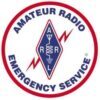KNW-133 Vacation Go-Kits
KNW-133Vacation Radio Go-Kits Adapted by Earl Pack, AE5PA from a Cook County ARES training article by Neil Ormos, N9NL on 23 May 2007additions by George Greene, NE9ET; Gregg Rosenberg, AB9MZ and Earl Pack, AE5PA. .EmComm folks endlessly discuss and debate the optimal “Go-Kit”– a bag, box or other containing the essential items we will need … Read more
